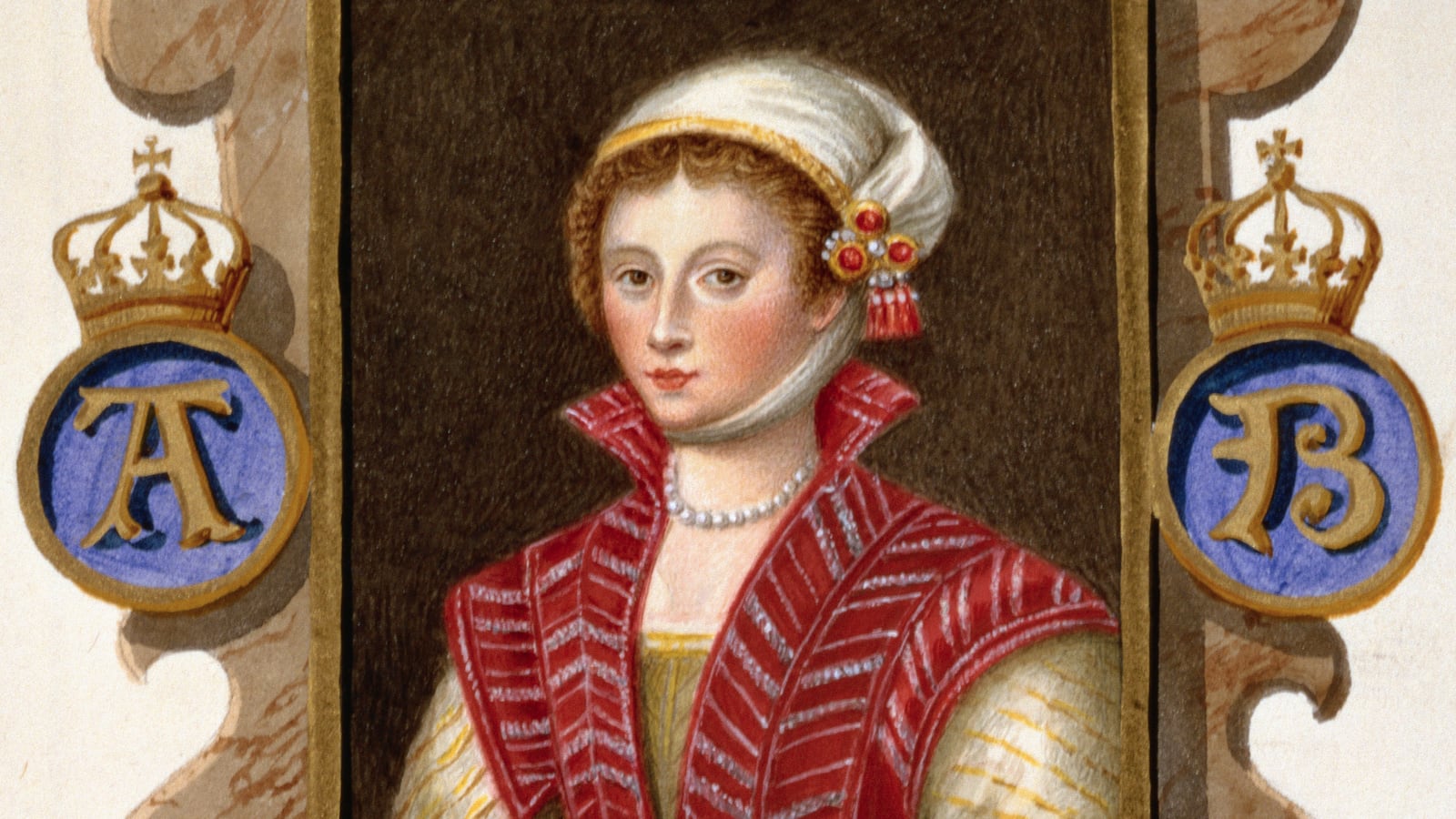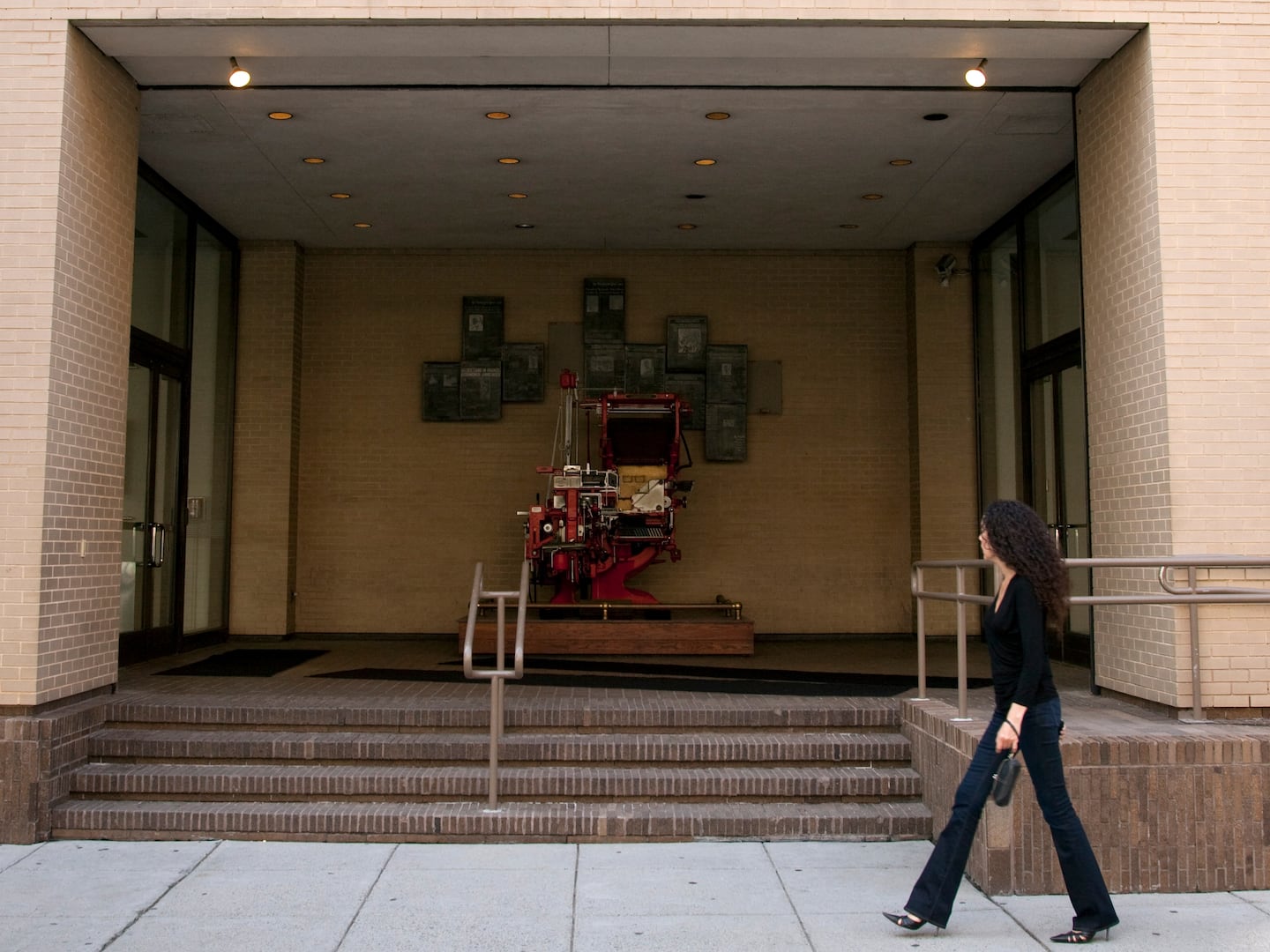Anne Boleyn already had a few counts against her when in 1536 Thomas Cromwell and the Seymours saw which way the wind was blowing, and decided to sweep her out of the way: Henry VIII wanted a new wife and Jane Seymour was waiting in the wings. One, Anne had grown up at the French court and was said to have “French airs,” an accusation as deadly in politics then as it is now. There were rumors about her behavior at the French court, but it’s possible the gossips had her confused with her slutty sister Mary. Two, she wasn’t conventionally beautiful; flat-chested, olive-skinned, and dark-haired, she was a far cry from the deliciously shapely, fair-skinned, fair-haired nymph so in fashion with the Tudors. And yet, with her foreign airs and unconventional looks, there was something suggestive about her, to such a degree that she could stun a man with her eyes. It made her the perfect screen on which to project any desire, any fear. Anything could be believed of her—and it was—a third nipple, a sixth finger, witchcraft, adultery, incest. Quick-witted, sharp-tongued, and flirtatious, Anne drew a coterie of men to her, and each would lose his head for her. Henry Norris, Francis Weston, William Brereton, Marc Smeaton, all were executed just days before Anne, all accused of carnal knowledge of the queen and treason against the king. Her brother went too. They say his wife turned him in.

Anne has been as magnetic to posterity as she was to her contemporaries. Her story has been told countless times since her death, in histories, plays, operas, novels, films, television series, etc. Certain elements have seemed unimpeachably true for one generation, only to be revised and reversed by the next. Susan Bordo’s delightfully cheeky, solidly researched The Creation of Anne Boleyn: A New Look at England’s Most Notorious Queen aims to investigate “the erasure of Anne Boleyn and the creation of ‘Anne Boleyn.” Bordo, a well-known scholar of cultural studies, uses her good sense and academic training to shrewdly chip away at historical commentary, which has hardened speculation into supposed “facts.” The result is a sensible look at the way Anne’s image has been manipulated and shaped by different agendas and historical periods over the centuries.
Just as some portraits say more about the artist than the subject, so do representations of Anne speak volumes about different historical moments. “Anne Boleyn” is a “skanky schemer” today and “unsung hero of the Protestant Reformation,” to the Elizabethans; a Romantic heroine one decade and a Victorian cautionary tale the next; in the 1950s she was a typical teenager, admiring her figure in the looking-glass; by the 2000s she’s a Mean Girl, stealing her sister’s boyfriend. Most recently, post-Showtime series The Tudors, she’s a feminist icon, “too smart, sexy, and strong for her own time, unfairly vilified for her defiance of sixteenth-century norms of wifely obedience.”
The scheming, misshapen Anne is largely the invention of Eugene Chapuys, the Imperial ambassador to England and a close ally of Henry’s first wife, Katherine of Aragon, whom Anne put out to pasture. Chapuys fervently hated Anne, as a Catholic and as a defender of Katherine, but as history would have it, his official communications to the emperor of the goings-on at the court of Henry VIII are some of the only firsthand testimony that has survived since that period. But not of course the most trustworthy source where Anne was concerned. Bordo meticulously traces Chapuys’s influence on later historians, and shows that many of them are dependent on his dubious claims.
Putting to rest the rumors of the third nipple (probably just a mole) and the sixth finger (a vestigial fingernail, but that’s what comes of generations of marrying cousins), Bordo’s larger goal is to ask: Why does Anne get to people the way she does? How could this woman have captured the heart of a king to such an extent that he would tear his kingdom apart to have her, alienating the pope and half the leaders in Europe, casting aside his wife and daughter, waiting six long years to marry a nonroyal who wouldn’t bring him any money, prestige, or diplomatic agreements? And what happened to their marriage? How could Henry have actually murdered her?

“Anne’s life was … the stuff of juicy tabloid stories,” says the literary agent Irene Goodman. “[I]t has sex, adultery, pregnancy, scandal, divorce, royalty, glitterati, religious quarrels, and larger-than-life personalities.” Seen in this light, Anne’s a princess for all ages. A recent article by Hilary Mantel (the author of a Booker-winning two thirds of a projected trilogy about Thomas Cromwell and Henry VIII) in the London Review of Books comparing the Duchess of Cambridge to Princess Diana and Anne Boleyn provoked such a fury that the prime minister himself suggested Mantel had gone too far. She said Kate Middleton “appeared to have been designed by a committee and built by craftsmen, with a perfect plastic smile and the spindles of her limbs hand-turned and gloss-varnished.” But Mantel’s larger point is to accuse the British tabloid press of threatening Kate into submission; were she to break the mold and show a fault, or some theretofore unapproved hint of personality, the dogs would be at her. The tabloids demand that Kate Middleton be as docile as Jane Seymour, whose personal motto was “Bound to obey and serve.” (Very different from Anne’s, whose motto before her marriage was “Ainsi sera, groigne qui groigne,” which translates roughly as “Grumble all you like, this is how it’s going to be.”) They reduce Kate, and Anne, and Jane, to a body to hang clothing on, a body to produce heirs to the throne. (Mantel, unfortunately, repeats the “scheming Anne” portrayal in her own novels.)
Bordo (the author of numerous studies of gender and the body) quite surprisingly doesn’t go nearly far enough interrogating why we have been obsessed with Anne’s personal appearance and sex life; while I’m sure Anne would be glad that 600 years later someone took the trouble to refute the rumors of the extra finger and the third nipple, devoting entire sections to questions like “What color was Anne’s hair?” validates the fetishizing of the royal female body Mantel denounces.
The most insightful contribution Bordo makes to our understanding of bodily Anne is in a passage discussing her death. Mary Hastings Bradley, the author of a 1912 novel about Anne called The Favor of Kings, explained that she wanted to show Anne as “a very human girl.’” From this Bordo infers that here “‘human’ is to be counterposed to ‘Historical Figure’ and ‘girl’ is to be contrasted with ‘queen’ as well as ‘woman.’” Bradley, Bordo says, wanted readers to “identify” with Anne, to “understand” her. This passage goes some way toward answering Bordo’s greatest question—Why does Anne obsess us?—as well as toward understanding the fixation on her body. We want to comprehend Anne and her story with the kind of understanding you can get only from seeing, from touching. And since we can’t touch a woman who’s been dead for six centuries, all we can do is project ourselves into her life. Bordo herself engages in this, in a passage in which she includes an anecdote from her own near-death experience alongside citations from Dostoyevsky and the naturalist Lewis Thomas speculating about the moment of death as a release. This is the closet Bordo comes to a phenomenological approximation of what it was like to be Anne Boleyn.
In our age of science we believe truth lies in the physical, in what can be empirically observed with our own eyes, held, felt, weighed. This gives our justice system, with its insistence on evidence, a clear advance over that of the Tudors, whose trials lasted a half-hour at the most, and if the king wanted you found guilty, well, as Cardinal Wolsey once put it (and he learned this the hard way), “‘If the Crown were prosecutor and asserted it, justice would be found to being in a verdict that Abel was the murderer of Cain.’” But it also means we’re ready to see scientific explanations for historical mysteries as revelations of a higher truth, when they are, after all, just another kind of narrative.
This comes through most clearly in both Bordo’s and Mantel’s presentation of recent scientific research by the bio-archeologist Catrina Banks Whitley and the anthropologist Kyra Kramer, suggesting that Henry VIII could have been Kell positive (a rare blood type that adversely affects progeny, making it difficult to survive past infancy) and possibly suffered from McLeod syndrome, which would explain his sudden weight gain and personality change after 40. Bordo is skeptical. She quotes the historian (and Boleyn specialist) Retha Warnicke’s reaction: “‘It’s an interesting theory and it’s possible true, but it can’t be proven without some clinical evidence and there is none’”(122). “The gap between ‘could’ and ‘true’ widens to the point of absurdity when Whitley and Kramer speculate that the genetic hypothesis ‘could explain why Henry shifted from supporting Anne to having her beheaded.’ This is to collapse the three-year trajectory of a politically troubled, emotionally intense marriage into a diagnosis from House,” Bordo quips.
Is it even possible to come up with a version of Anne that is less biased by our zeitgeist than earlier incarnations, simply because we know more about science and gender studies than they did? We’ll probably never know who the “real Anne” was—too much primary material was destroyed after her death—but it is flattering to think our own contemporary version (that is, Bordo’s) is the most likely because it seems the most critically enlightened. These, however, are not questions Bordo spends much time considering.
No matter: The Creation of Anne Boleyn is a welcome corrective to the myths and misconceptions. If it does not go far enough in some respects, at least it’s a good start.






